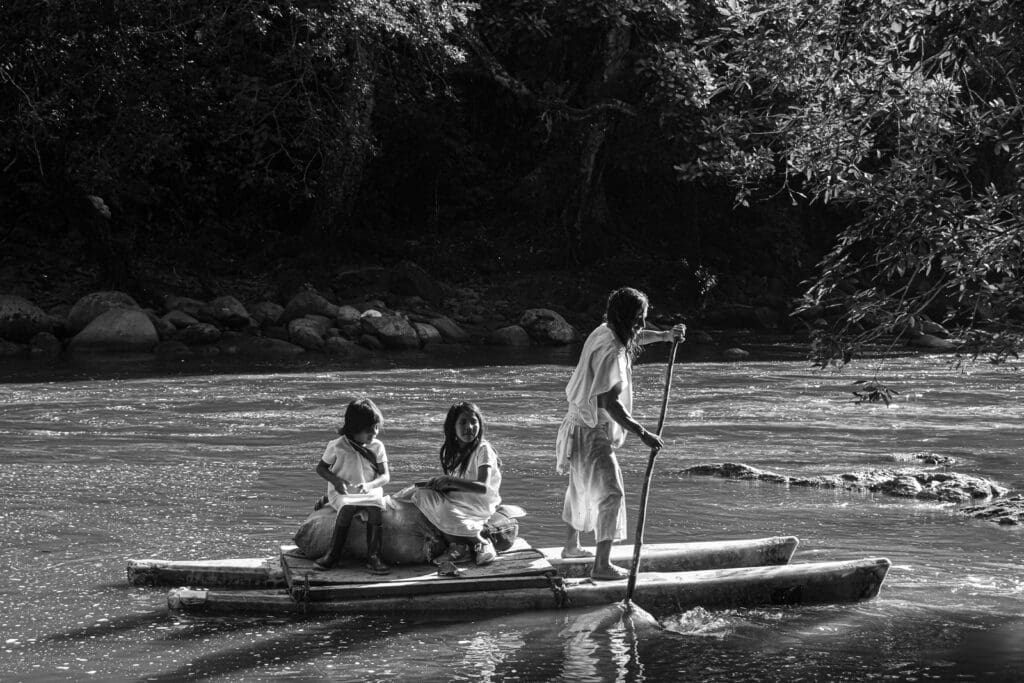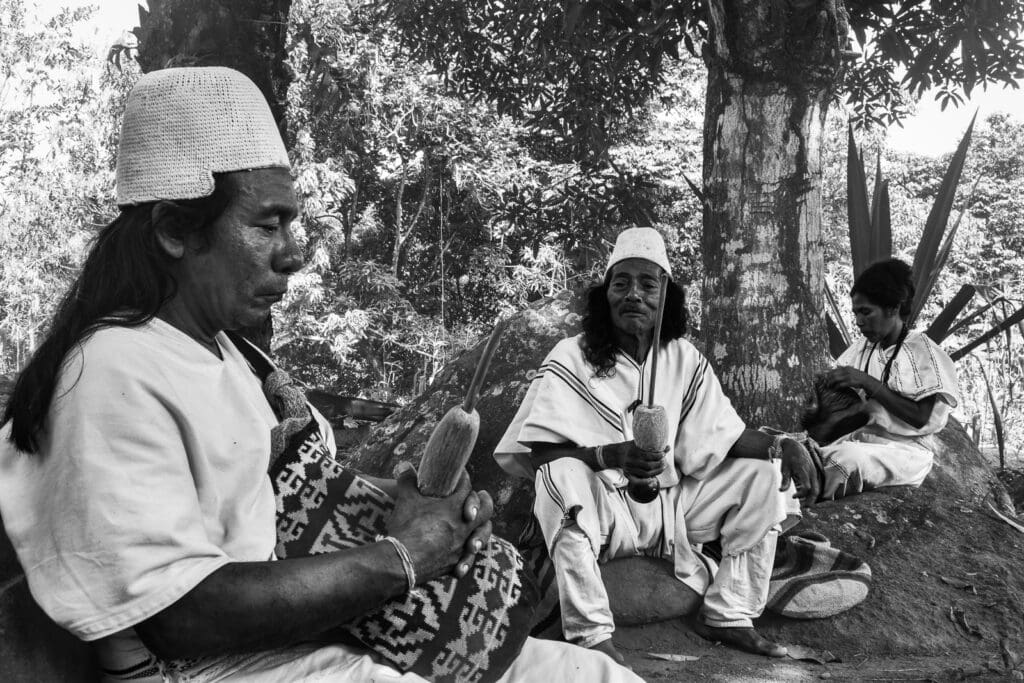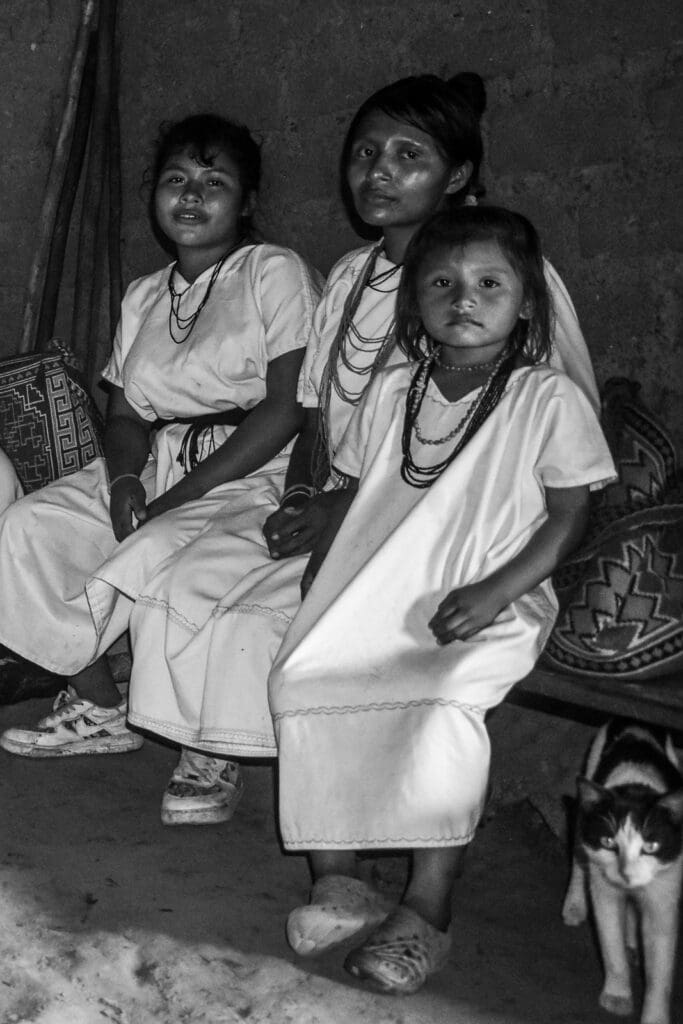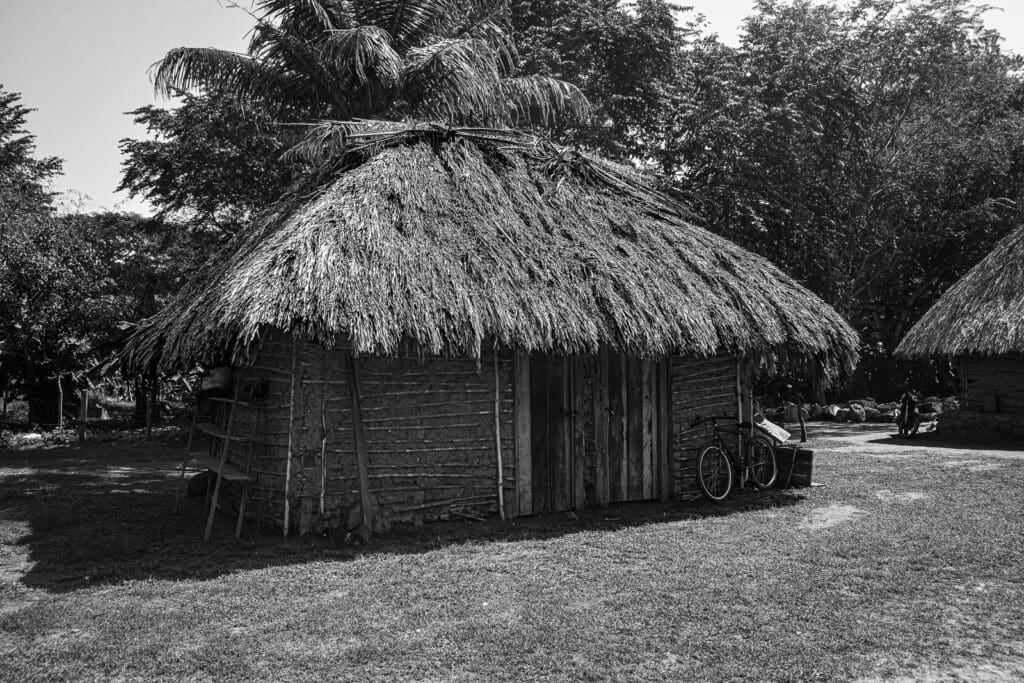The Arhuacos, or Iku, are one of four indigenous communities living in the Sierra Nevada de Santa Marta in northern Colombia. Originating in the area in which Parque Nacional Natural Tayrona now extends, they stand out for defending their lands and collective rights and striving to preserve their culture, language, and traditions. Currently, they are found mainly in the southwestern part of the Sierra Nevada and the San Diego and Mingueo River areas. The Arhuacos are divided into 42 communities, forming the Tayrona Indigenous Federation.
The myth of Big Brother
For the Arhuacos, the Sierra Nevada de Santa Marta represents ancestral territory and spiritual balance. The four basic principles that guide the Arhuacos in caring for Mother Earth also reflect their way of life. They are committed to respect and equality, recognize diversity as a fundamental element, and regard Mother Earth as a subject of rights. They promote awareness that the land should not be exploited but recognized as a source of life. The Arhuacos’ cosmological vision focuses on returning to the earth what it has generously offered us. Their philosophy is based on the interconnectedness of nature and society, seen as a single entity. This perspective derives from the sacred law, which is unchanging in time and explains the origin of matter, evolution, balance, and preserving harmony. The Arhuacos see themselves as the custodians of the world, following the creation myth in which the Sierra Nevada represents Big Brother and is responsible for maintaining the balance over Little Brother or the rest of civilization.

The importance of traditions for the Arhuacos
The Arhuacos demonstrate strong community cohesion and a deep connection to their culture. They mainly live in remote areas within the wilderness, far from the rest of the world, with which they do not like to come into close contact. Each village has its internal structure and organization. Women and men take turns in different tasks, including cooking for the community and cultivating the land. In addition, a flagship village welcomes guests from other villages or towns for essential meetings. It is home to a school where various subjects, including their official language, are taught. In their social fabric, a key figure is the Mamo or Mamü. These are spiritual leaders, chosen and trained from childhood, whose task is to preserve the balance between nature and society and to act as a link between the supernatural world and our reality. Each Mamo is chosen from several candidates, ranging in age from 8 to 10. Their knowledge also extends to philosophy and medicine, and they play a decisive role in important events such as weddings or births.
Objects such as mochilellas and poporros are of utmost importance in preserving the unique cultural identity of the Arhuacos. Initially, the mochilellas were woven from natural fibers, such as cotton. Today, however, these bags are made of sheep’s wool. The colours and depictions, woven by the women with a technique learned from an early age, recall the cosmology proper to the Arhuacos.
The poporro, on the other hand, is a container for powdered lime, made by crushing shells collected along the coast. Poporro is a crucial element for humans. Used to express thoughts and memories, it reinforces the connection between male and female, earth and sky.



An ongoing struggle for land preservation
In Colombia, the struggles of indigenous peoples for their rights are rooted in centuries past. These movements focused mainly on the demand for fundamental rights such as land, culture and self-government. In 1982, ONIC (Organizaciòn Nacional Indìgena de Colombia) was created, a political entity established to coordinate and represent most of Colombia’s ethnic groups in government. ONIC has developed a platform of struggle based on unity, land, culture and autonomy. The result of these efforts was the 1991 approval of the Constitution. The Constitution recognizes the territorial rights of indigenous communities and their right to self-government, thus establishing their right to inhabit and use traditionally occupied lands and active participation in managing natural resources in their territories. This recognition is critical to preserving indigenous communities’ identity, culture, language and way of life.
Armed conflicts with the government and the intervention of guerrillas and paramilitaries in the 1990s in the Sierra Nevada area negatively affected the indigenous population, causing severe problems related to illegal control of their territory, deforestation and illicit crops.
Despite recent agreements with the Santa Marta region, threats to their right to inhabit these territories remain the order of the day. Local and foreign companies submit continuous projects to build in this area. Added to this is climate change, which is putting a strain on an already struggling land. But despite everything, the Arhuacos do not give up and continue to fight to preserve Mother Earth.

